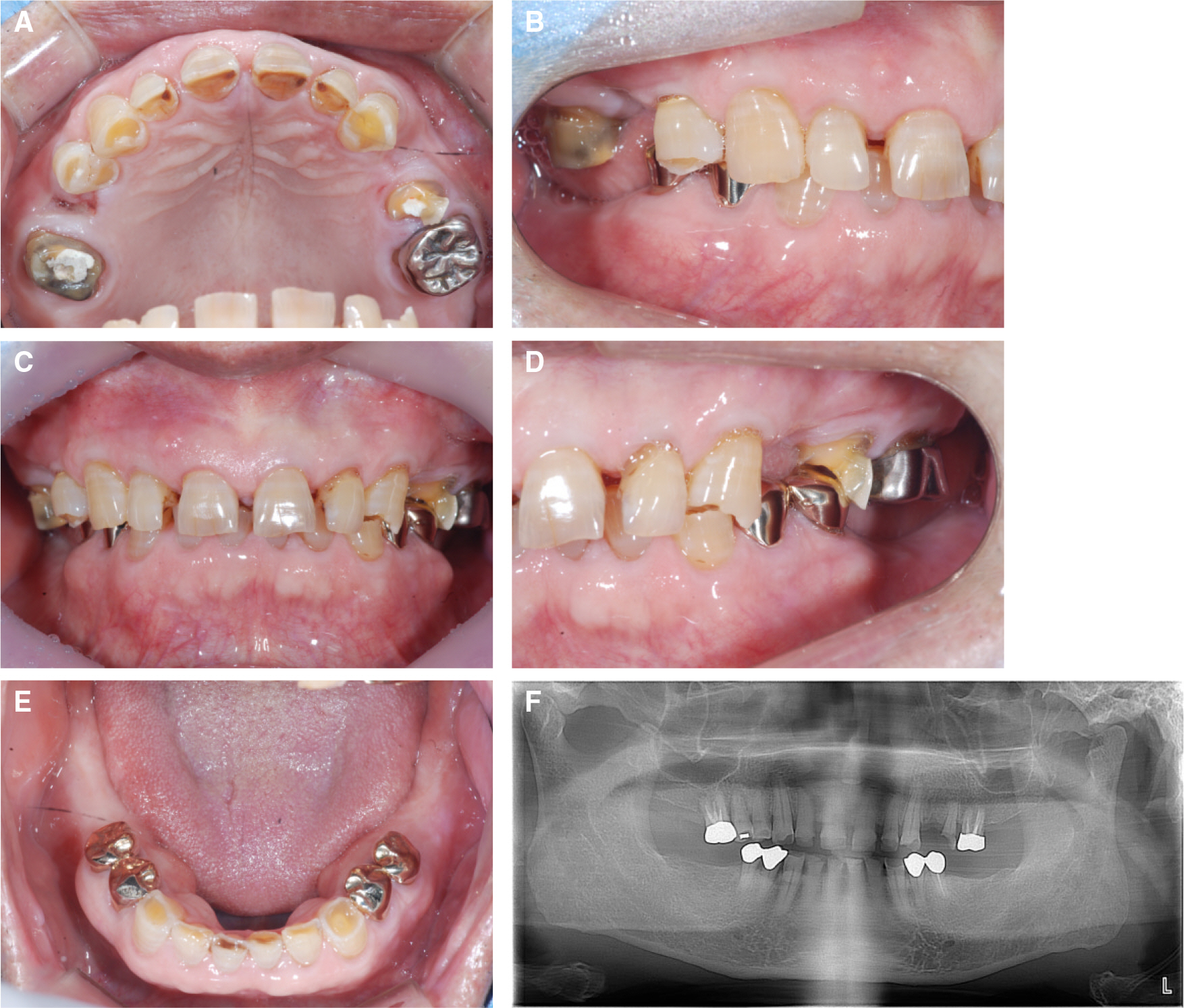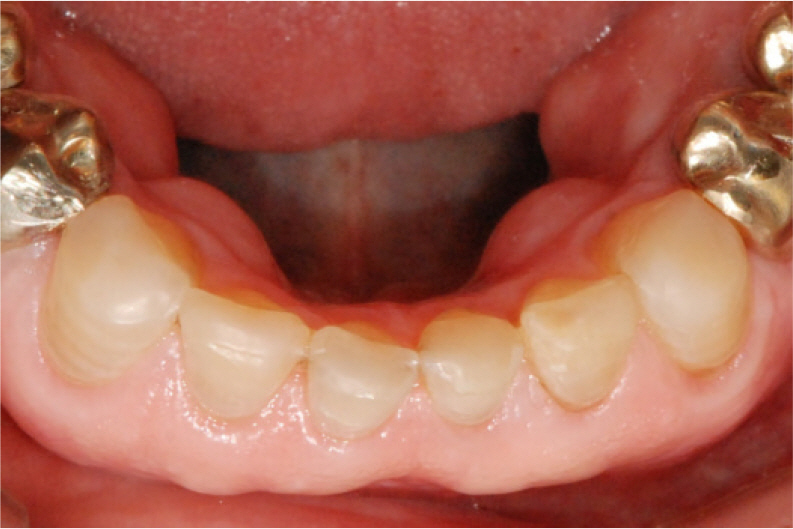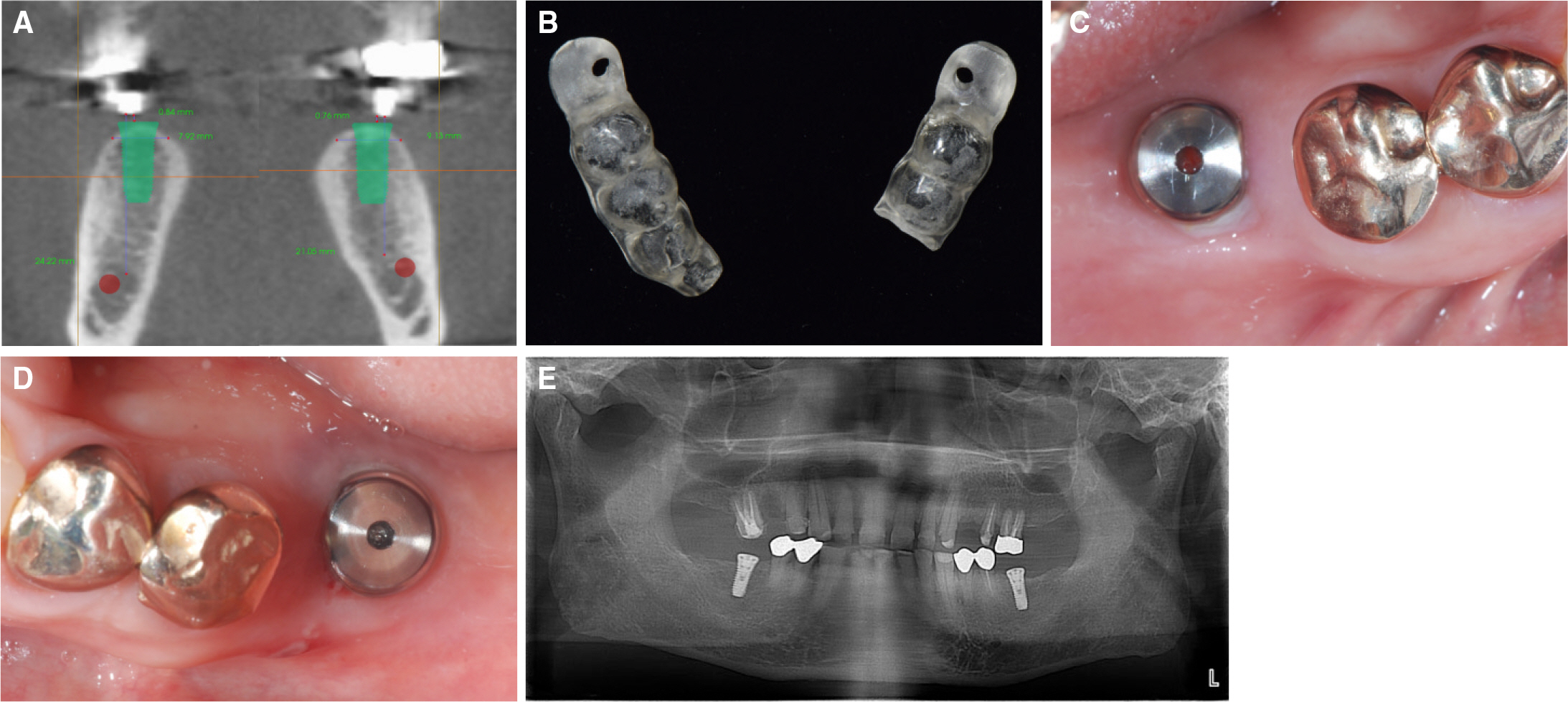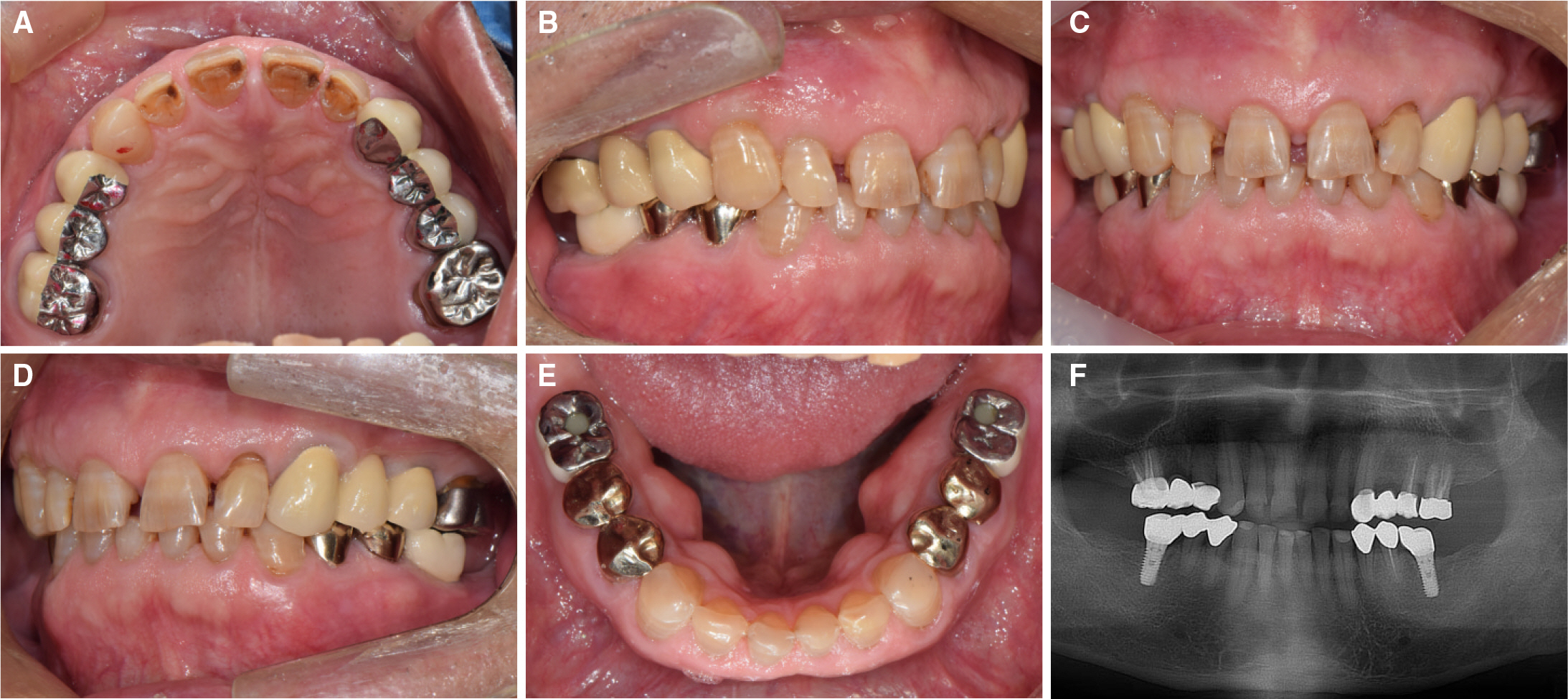J Korean Acad Prosthodont.
2016 Jan;54(1):49-56. 10.4047/jkap.2016.54.1.49.
Using implants for worn dentition with the altered vertical dimension of occlusion based on shortened dental arch concept: a case report
- Affiliations
-
- 1Department of Prosthodontics, Seoul St. Mary's Hospital, Catholic University of Korea, Seoul, Republic of Korea. lsuyoung@daum.net
- KMID: 2153049
- DOI: http://doi.org/10.4047/jkap.2016.54.1.49
Abstract
- Excessive occlusal wear can result in unacceptable damage to the residual teeth structure, anterior guidance and masticatory function. An 86-year-old man presented with worn dentition and anterior deep bite due to loss of the posterior support. Two implants covered by Korean national health insurance, fixed partial denture and direct composite resin were used to restore the dentition, instead of removable prosthesis. The occlusal vertical dimension was increased by 2 mm in the premolar area and shortened dental arch concept was applied. This treatment was a less expensive alternative to full-mouth rehabilitation with positive esthetic and functional outcomes after 7 months of follow-up.
MeSH Terms
Figure
Reference
-
1.Savoca MR., Arcury TA., Leng X., Chen H., Bell RA., Anderson AM., Kohrman T., Frazier RJ., Gilbert GH., Quandt SA. Severe tooth loss in older adults as a key indicator of compromised dietary quality. Public Health Nutr. 2010. 13:466–74.
Article2.Haraldson T., Karlsson U., Carlsson GE. Bite force and oral function in complete denture wearers. J Oral Rehabil. 1979. 6:41–8.
Article3.Meeuwissen JH., van Waas MA., Meeuwissen R., Kayser AF., van't Hof MA., Kalk W. Satisfaction with reduced dentitions in elderly people. J Oral Rehabil. 1995. 22:397–401.
Article4.Kanno T., Carlsson GE. A review of the shortened dental arch concept focusing on the work by the Kayser/Nijmegen group. J Oral Rehabil. 2006. 33:850–62.5.Kayser AF. Shortened dental arches and oral function. J Oral Rehabil. 1981. 8:457–62.
Article6.Kim KS., Lim YJ., Kim MJ., Kwon HB., Yang JH., Lee JB., Yim SH. Variation in the total lengths of abutment/implant assemblies generated with a function of applied tightening torque in external and internal implant-abutment connection. Clin Oral Implants Res. 2011. 22:834–9.
Article7.Chen MS., Hunter P. Oral health and quality of life in New Zealand: a social perspective. Soc Sci Med. 1996. 43:1213–22.
Article8.Heydecke G., Tedesco LA., Kowalski C., Inglehart MR. Complete dentures and oral health-related quality of life — do coping styles matter? Community Dent Oral Epidemiol. 2004. 32:297–306.
Article9.Choi JS., Kang WJ., Chung MK. A study on the satisfied degree of oral function in geriatric patients with shortened dental arch. J Kor Acad Prosthodont. 1992. 30:191–202.10.Lee CY., Chang HJ., Chung MK. Oral status of geriatric patients, and their demand and satisfaction in prosthodontic treatment. J Kor Acad Prosthodont. 2001. 39:323–35.11.Yang SB., Moon HS., Han DH., Lee HY., Chung MK. Oral health status and treatment and treatment need of institutionalized elderly patients. J Kor Acad Prosthodont. 2008. 46:455–69.12.Witter DJ., De Haan AF., Kayser AF., Van Rossum GM. A 6-year follow-up study of oral function in shortened dental arches. Part II: Craniomandibular dysfunction and oral comfort. J Oral Rehabil. 1994. 21:353–66.
Article13.Witter DJ., de Haan AF., Kayser AF., van Rossum GM. A 6-year follow-up study of oral function in shortened dental arches. Part I: Occlusal stability. J Oral Rehabil. 1994. 21:113–25.
Article14.Witter DJ., Van Elteren P., Kayser AF., Van Rossum GM. Oral comfort in shortened dental arches. J Oral Rehabil. 1990. 17:137–43.
Article15.Solow RA. Comprehensive implant restoration and the shortened dental arch. Gen Dent. 2010. 58:390–9.16.Campelo LD., Camara JR. Flapless implant surgery: a 10-year clinical retrospective analysis. Int J Oral Maxillofac Implants. 2002. 17:271–6.17.Venkatesh KV., Nandini VV. Direct metal laser sintering: a digitised metal casting technology. J Indian Prosthodont Soc. 2013. 13:389–92.
Article18.Abou Tara M., Eschbach S., Bohlsen F., Kern M. Clinical outcome of metal-ceramic crowns fabricated with laser-sintering technology. Int J Prosthodont. 2011. 24:46–8.19.Akova T., Ucar Y., Tukay A., Balkaya MC., Brantley WA. Comparison of the bond strength of laser-sintered and cast base metal dental alloys to porcelain. Dent Mater. 2008. 24:1400–4.
Article20.Ucar Y., Akova T., Akyil MS., Brantley WA. Internal fit evaluation of crowns prepared using a new dental crown fabrication technique: laser-sintered Co-Cr crowns. J Prosthet Dent. 2009. 102:253–9.
Article
- Full Text Links
- Actions
-
Cited
- CITED
-
- Close
- Share
- Similar articles
-
- Full-mouth rehabilitation without changing the vertical dimension in patient with worn dentition
- Full mouth rehabilitation using zirconia crown in severe worn dentition: a case report
- Full mouth rehabilitation of the patient with worn dentition using full-contour monolithic zirconia prostheses at an increased vertical dimension of occlusion: a case report
- Full mouth rehabilitation with extremely worn dentition
- Complete mouth rehabilitation with vertical dimension increase in patient with extremely worn dentition









